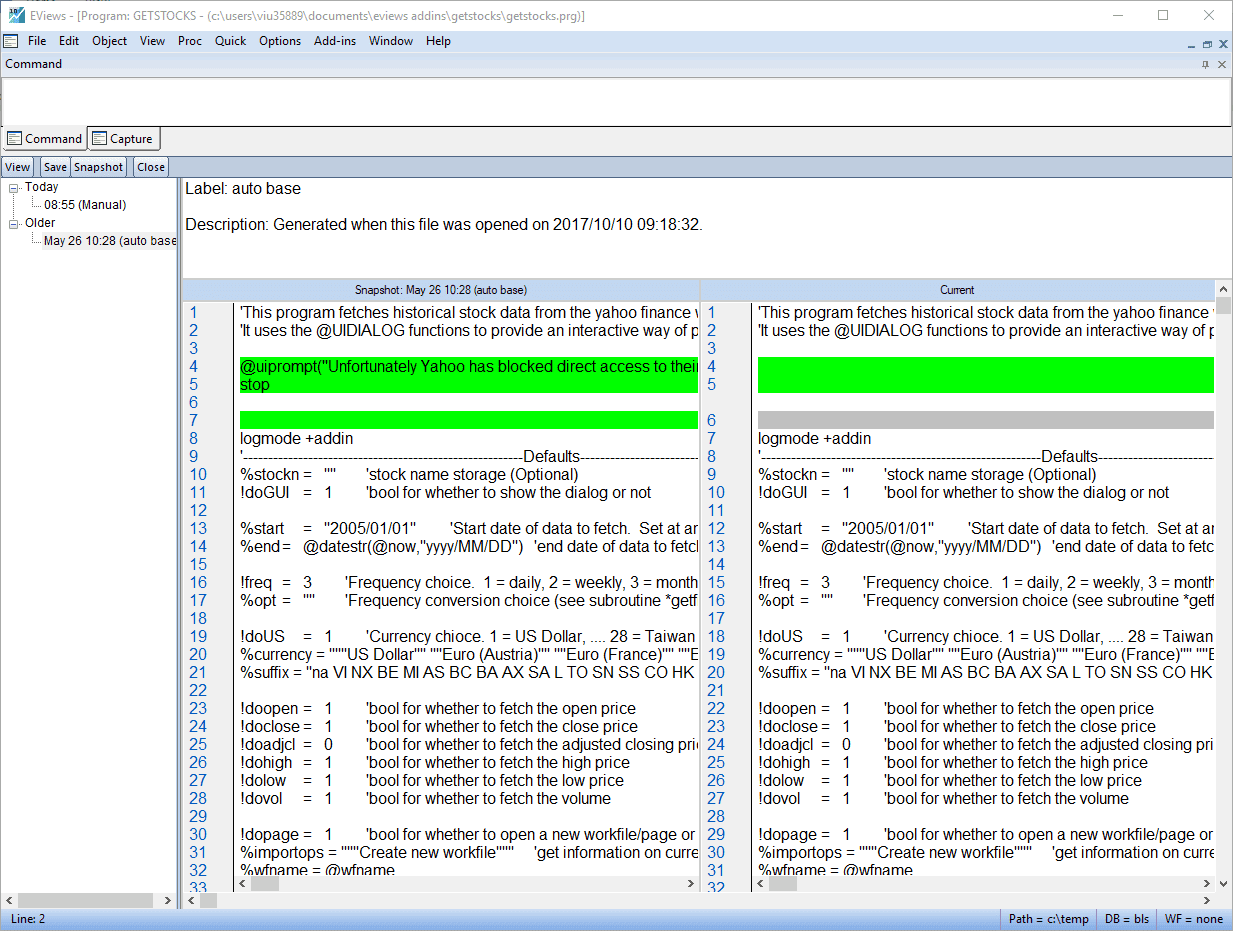



The Diebold-Mariano test allows for statistical comparison of the accuracy of two competing forecasts of the same data. The Forecast Evaluation Series View has been extended with the addition of the Diebold-Mariano test as part of the output whenever two forecasts are being evaluated. In addition, EViews can compute the Combination Test, or Forecast Encompassing Test (Chong and Hendry, 1986 Timmermann, 2006) for evaluating whether averages of forecasts perform better than the individual forecasts. When faced with competing forecasts of a single variable, it can be difficult to decide which single or composite forecast is "best", EViews 9 provides tools to solve for these problems.ĮViews computes four different measures of forecast accuracy: When constructing a forecast of future values of a variable, economic decision makers often have access to different forecasts perhaps from different models they have created themselves or from forecasts obtained from external sources. EViews introduces an automatic ARIMA forecasting series procedure that allows the user to quickly determine an appropriate ARIMAX specification and use it to forecast the series into the future.ĮViews provides tools for evaluating the quality of a forecast whichĬan help you determine which single forecast to use, or whether constructing a composite forecast by averaging would be more appropriate. Automatic ARIMA ForecastingĪutomatic ARIMA forecasting is a method of forecasting values for a single series based upon an ARIMA model.Īlthough EViews provides sophisticated tools for estimating and working with ARIMA models using the familiar equation object, there is considerable value in a quick-and-easy tool for performing this type of forecasting. Among the highlights are new tools for automatic ARIMA forecasting, forecasting evaluation and averaging, and VAR forecasting. EViews 9.5 New Econometrics and Statistics: ForecastingĮViews features a number of additions and improvements to its toolbox of basic statistical procedures.


 0 kommentar(er)
0 kommentar(er)
